Dear Guests,
Namaste & warm Greetings from Nepal!!
We are very pleased that you have inquired for your trek with Asiatic Roads. The idea of this hand out is to furnish you with information for your pre-trek preparations.
Firstly, we recommend that you travel light. A good-sized duffel bag with a top length zipper that can lock is best, together with a day pack for carrying personal items on the trek. An extra smaller bag would be handy to carry back your souvenirs after the trip.
AFTER ARRIVAL IN KATHMANDU
1. TREK BRIEFING:
On your arrival in Kathmandu, we will arrange to meet for a pre-trek briefing. Full information on all aspects of your trek, questions and doubts will be discussed. On trek your Sherpa leader (sardar) will give you more details about the route, villages, people and other information regarding the trek.
2. PACKING:
You may leave behind part of your luggage in your hotel or our locker room before the trek, in Kathmandu. All baggage is to be clearly marked and locked. Kindly refrain from carrying or wearing valuables on the trek. You may leave them behind at the safety deposit box at your hotel or with us.
3. HOW TO PACK:
Your clothes and equipment should fall into the following 4 categories:
1. What you are going to leave behind in Kathmandu.
2. What you are going to wear on the trail.
3. What you are going to carry in your day pack.
4. What you would like the porters to carry for you.
Excess clothes and luggage can be stored in your hotel’s storeroom, and valuables in the safety deposit box. Please label your luggage and make sure to take a receipt from the front desk of your hotel for all the things you would like to leave behind while you are away.
ON TREK
1. YOUR STAFF ON THE TRIP:
Will consist of one English speaking Sirdar (Guide) and Assistance Guide or Escort who will be wholly responsible for the execution of the trip once it hits the trail. He will be assisted by Sherpa(s) as necessary.
2. WHAT TO CARRY DURING THE TREK:
Your daypack, preferably waterproof should be light, small and comfortable. All small personal items like toilet paper, water bottle, medicines, extra shirt, light warm wears, rain gear, gloves etc. that may be needed for the days trek should be packed. Your duffel will be carried by porters who may not be with you at all times.
3. MONEY ON TREK:
You may want to buy drinks at wayside shops and souvenirs from the natives. Small change should be carried. As customary, we can help discuss in detail in the pre-trek briefing.
TREK KIT LIST
WHAT TO WEAR:
Light clothing are only for short treks up to seven days at altitudes up to 6000ft (1830m) during fall (autumn) from September to November and in spring between March to May. The other months at all altitudes will be cold and at most times the temperatures will be below zero.
Footwear:
You will need hiking boots with ankle support, sneakers for flat trails and flip-flops or chappals for use around the camp/lodge.
Clothes:
Shirts, T-shirts (4), blouse, etc., for daywear and a woolen shirt/T-shirts for evenings.
MEN: Shorts, cotton trousers, jeans, sweat pant (recon-mended) etc.
Undergarments & Socks:
Thermal underwear and inner trouser for the above 7,000 ft. treks. Thick trek socks.
Warm Clothes:
A light sweater, a windcheater or light lined/padded jacket and down jacket or parka for above 7000 ft. treks. Woolen thick cap and warm gloves.
Sun / Rain:
Rain gear or umbrella and a sun hat is essential. Global warming has led to freak weather conditions and it has become more and more difficult to predict weather conditions.
Note: Umbrellas are cheap and easily available in Kathmandu.
HOW TO PACK
In The Day Pack: In the Duffel Bag:
Sun glasses Towels
Moisturizing/Sun screen lotion Spare batteries
Prescribed medicines Toiletries
Flash light washing soap
Camera and spare film Spare clothes all wrapped in plastic bags
Binoculars-optional
Reading Reference book/Note book
Pencil/Pen / Water bottles/ Trek permits
Toilet paper
Umbrella/rain gear / Sweater
Note: Sleeping bags can be purchased in Kathmandu. It is even available on hire upon request. However, we request our clients to bring their own sleeping bags because of hygiene.
ADDITIONAL ITEMS:
For most treks from mid-November till mid-February and for those above 10,000 ft. /3000 m., in Spring and Autumn, anti-dazzle glasses or goggles with side attachments are recommended and High altitude food supplements (favorite snacks) if necessary.
IMPORTANT NOTE:
In the event of an accident or serious ailment on a trek, helicopter evacuation can be arranged. The helicopter fare with 10% service charge and the hospital/medical charge will have to be cleared before departing from Kathmandu. A risk, release and guarantee form has to be signed before leaving on a trek with us.
INSURANCE:
There are no reliable medical insurance policies in Nepal for foreigners. We strongly recommend you to take comprehensive holiday insurance in your own country covering adventures involving some elements of risk, especially to cover Emergency Helicopter Evacuation.
BOOKS:
Trekking in the Nepal Himalayas by Stan Armington published by the Lonely Planets books provides you comprehensive information on all matters regarding trekking in Nepal
The Trekkers Peaks of Nepal by Bill O’Connor published by Crow Wood press in U.K. provides you with information on all matters regarding climbing peaks in Nepal.
Trekking in Nepal by Toru Nakano published by Allied Publishers gives you some insight into some important trekking areas in Nepal. A map of Nepal is enclosed in the book.



